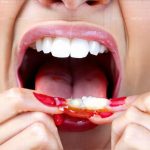The simple act of chewing—something most of us do dozens of times an hour without conscious thought—is far more than just a preliminary step in eating. It’s a foundational element of efficient digestion, nutrient absorption, and even overall well-being. Often overlooked, the mechanics and consequences of how we chew profoundly impact our bodies, influencing everything from gut health to satiety signals and potentially beyond. We live in a world that prioritizes speed and convenience, often leading to rushed meals and inadequate chewing, which can subtly but significantly compromise our digestive processes.
This habit of rapid eating isn’t new, but its consequences are becoming increasingly apparent as rates of digestive issues rise. Understanding the intricate relationship between chewing behavior and digestion allows us to make informed choices about how we approach mealtimes, potentially optimizing our health and minimizing discomfort. Beyond just breaking down food physically, chewing initiates a cascade of physiological events that prepare the body for efficient nutrient processing. It’s a fascinating example of how seemingly small actions can have substantial ripple effects throughout the system.
The Mechanics of Chewing & Initial Digestion
Chewing, technically known as mastication, is the first stage of digestion and involves much more than simply crushing food with our teeth. It’s a complex process involving coordinated movements of the jaw, salivary glands, and oral muscles. When we begin to chew, signals are sent to the brain indicating that food is present, triggering a cephalic phase of digestion—a preparatory response even before the food reaches the stomach. This includes the release of saliva, which contains enzymes like amylase that begin breaking down carbohydrates. The more thoroughly we chew, the greater the surface area exposed for enzymatic action.
The physical breakdown of food during chewing is crucial for several reasons. Larger particles can irritate the digestive tract and lead to discomfort or bloating. Insufficiently chewed food also requires more effort from the stomach and intestines to break down, potentially hindering nutrient absorption. Furthermore, effective mastication stimulates peristalsis – the wave-like muscle contractions that move food through the digestive system. It’s not just about making the food smaller; it’s about preparing it for optimal processing downstream. Consider how different textures impact chewing:
- Crisp vegetables require more effort and time to break down than softer foods.
- Dense proteins benefit from prolonged chewing to initiate protein breakdown in the mouth.
- Foods with fiber necessitate thorough mastication to release their full benefits.
Proper chewing isn’t just about how we chew, but also when. Taking a few deep breaths before you start eating can help calm your nervous system and promote mindful eating, which encourages slower, more deliberate chewing. This simple practice can significantly improve the digestive experience. Understanding how stress impacts digestion is also key to a healthy lifestyle.
Saliva’s Role Beyond Moistening Food
Saliva is often thought of simply as lubrication for food, but it’s a remarkably complex fluid with crucial roles in digestion. It contains enzymes that initiate carbohydrate breakdown, as mentioned previously, but its functions extend far beyond this initial step. Lysozyme, an enzyme found in saliva, possesses antibacterial properties, helping to protect the mouth and digestive tract from harmful microorganisms. Furthermore, saliva contains mucins, which bind to food particles, creating a bolus—a soft mass that’s easier to swallow and digest.
The composition of saliva also changes based on what we’re eating. When encountering carbohydrates, the salivary glands increase production of amylase. When faced with acidic foods, saliva releases bicarbonate ions to neutralize acidity and protect tooth enamel. This adaptive response highlights the body’s incredible ability to adjust digestive processes in real-time. Saliva isn’t just a passive lubricant; it’s an active participant in the initial stages of digestion, setting the stage for efficient processing further down the line. It also plays a significant role in taste perception; without sufficient saliva, our ability to fully experience flavors is diminished.
The Impact on Gut Health
Insufficient chewing can directly contribute to gut health issues. When food arrives at the stomach in large, undigested chunks, it places a greater burden on the digestive system. This can lead to fermentation in the colon, producing gas and bloating. Furthermore, larger particles may not be fully broken down into absorbable nutrients, potentially leading to deficiencies over time. A compromised gut environment also impacts the microbiome – the trillions of bacteria residing in our intestines that play a crucial role in immunity, nutrient absorption, and overall health.
A healthy gut microbiome thrives on prebiotics—fibers found in plant-based foods that feed beneficial bacteria. Thorough chewing helps release these prebiotics, promoting microbial diversity and function. Conversely, undigested food particles can provide fuel for undesirable bacteria, contributing to dysbiosis – an imbalance in the gut microbiome. This imbalance has been linked to a wide range of health issues, including inflammatory bowel disease, allergies, and even mental health disorders. The connection between chewing, gut health, and overall well-being is becoming increasingly recognized as vital. Paying attention to hydration can also significantly improve gut health.
Satiety Signals & Weight Management
Chewing plays a significant role in regulating appetite and satiety – the feeling of fullness. It takes approximately 20 minutes for signals from the stomach to reach the brain indicating that we’re full. If we eat quickly and don’t chew our food properly, these signals may not be received before we’ve already overeaten. Thorough chewing slows down the eating process, giving the body time to register fullness cues.
The act of chewing itself also triggers hormonal responses that promote satiety. It stimulates the release of cholecystokinin (CCK), a hormone that signals fullness to the brain and reduces appetite. Additionally, it can increase levels of peptide YY (PYY), another hormone associated with reduced hunger. By taking our time and fully chewing each bite, we are more likely to listen to our body’s natural satiety signals and avoid overeating. This isn’t about restrictive dieting; it’s about cultivating a mindful eating practice that supports healthy weight management naturally. Sluggish digestion can also interfere with these signals.
Mindful Eating & Improving Chewing Habits
Improving your chewing habits begins with awareness. Most people are unaware of how quickly they eat or how little they chew each bite. A simple exercise is to consciously slow down during meals and focus on the texture, flavor, and aroma of your food. Here’s a step-by-step approach:
- Put down your fork between bites.
- Focus on chewing each mouthful thoroughly before taking another bite.
- Eliminate distractions like television or smartphones.
- Take deep breaths throughout the meal to promote relaxation and mindful awareness.
Another helpful technique is to set a timer for 20-30 minutes per meal, encouraging you to slow down and savor your food. Incorporating more whole foods into your diet – fruits, vegetables, nuts, and seeds – naturally encourages longer chewing times due to their texture and density. Finally, remember that consistency is key. Making small, gradual changes to your eating habits over time will yield lasting results. It’s about creating a sustainable approach to mindful eating that supports both digestive health and overall well-being. The effects of alcohol and caffeine should also be considered when building healthy habits. Remember that food temperature can affect digestion too, and avoid cold beverages. Finally, be mindful of how tight jeans impact your digestive system.


















